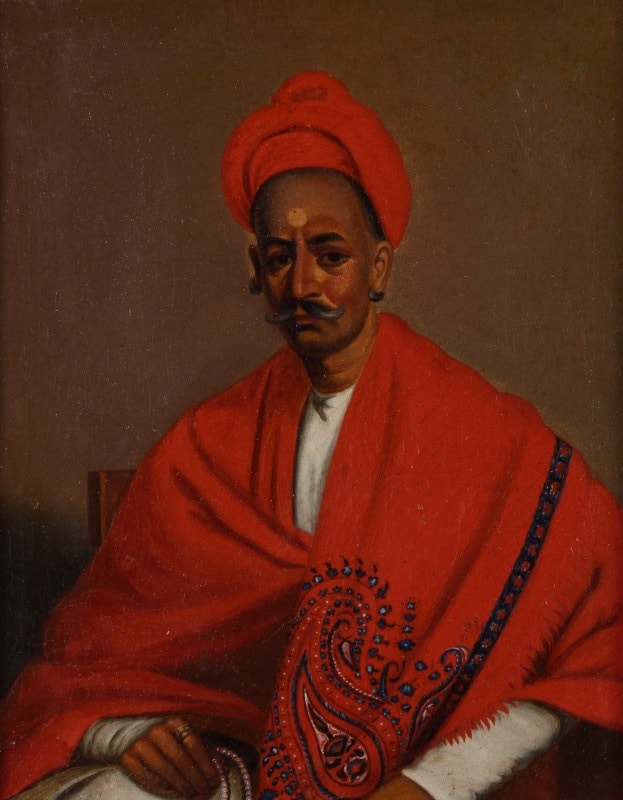Karen Taylor Fine Art
Agent, Advisor and Dealer in British Art
Studio of Lamqua (Chinese, 19th century)
Portrait of Balaji Pandit Nana Phadnavis or Fadnavis (1742–1800

SOLD
Half-length, seated on a chair wearing a red Kashmir shawl
Oil on canvas, in original chinese carved and gilded frame, inscribed on label with the sitter’s name attached to the back of the frame
27 x 22 cm
The sitter, known as the Mahratta Machiavelli, was the chief minister of the Peshwa administration in Poona who was painted several times by James Wales and J. T. Seton.
Nana’s administrative, diplomatic and financial skills brought prosperity to the Maratha Empire during a period of political instability, and he successfully navigated dealings with the British East India Company.
After the assassination of Peshwa Narayanrao in 1773, Nana managed the affairs of the empire with the help of a twelve-member regency council known as the Barbhai council of sardars or generals. The council was intended to protect Madhavrao II, the posthumous son of Narayanrao, born to his widow Gangabai, from the Peshwa family’s internal conflicts. The Maratha Empire, although weakened by the Panipat war of 1761, was still significant in size, with many vassal states under a treaty of protection, who recognised the Peshwa as the dominant power in the region.
After Nana’s death, Peshwa Baji Rao II placed himself in the hands of the British, provoking the Second Anglo-Maratha War that began the breakup of the Maratha confederacy.
The present portrait was presumably based on a print which made its way to China. The original has not been identified. Lamqua, or Guan Quiaochang, had a studio on China Street, Canton, where he worked following the style of George Chinnery quite closely (and undercutting his prices). The two artists knew each other well. Lamqua was a skilful artist who was well known amongst visitors, several of whom had accounts at his studio. His three-storey premises had a shop on the ground floor and a workshop above, where eight to ten painters worked, some making copies after western prints in oil or watercolours, others working on ivory or making pith paper watercolours. Lamqua had his own studio on the third floor. (See Patrick Connor, George Chinnery, 1993, chapter 17.)